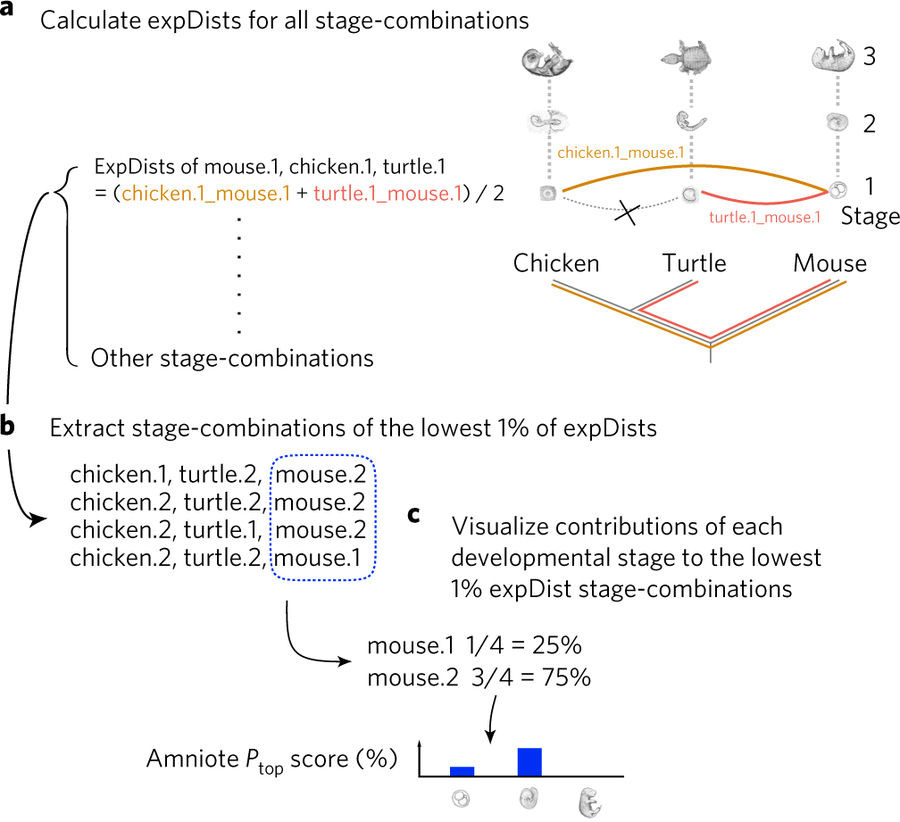多面発現遺伝子によって制約される脊椎動物の進化
Constrained vertebrate evolution by pleiotropic genes
2017年9月25日 Nature Ecology & Evolution 1 : 1722 doi: 10.1038/s41559-017-0318-0

脊索動物は、5億5000万年にわたる進化で形態が多様化してきたが、共通の基本的な解剖学的パターン(すなわち「ボディプラン」)は未知の機序によって保存されている。これについて発生砂時計モデルは、ボディプランを踏襲する器官形成期が門全体で保存され、制約を受けるためだとしている(ファイロタイプ仮説)。しかし、門全体の種を比較して定量的にこの説を検証した例はまだない。今回我々は、脊索動物8種から収集した胚発生前期から後期までのトランスクリプトームのデータに基づき、ファイロタイプ仮説は脊索動物よりも脊椎動物の方によく当てはまることを示す。さらに、脊椎動物の保存された胚発生中期プログラムは他の発生過程で集中的に使い回されており、使い回しの程度には、その進化的保存や正常な発生のための不可欠性との間に正の相関があることも見いだされた。このことから、脊椎動物の器官形成期に集中的に使い回されている遺伝子系が、多面発現による制約を介して器官形成の多様化に制約を課し、それが最終的に、脊椎動物に見られる共通の解剖学的パターンをもたらしたのではないかと考えられる。
Corresponding Author
Despite morphological diversification of chordates over 550 million years of evolution, their shared basic anatomical pattern (or ‘bodyplan’) remains conserved by unknown mechanisms. The developmental hourglass model attributes this to phylum-wide conserved, constrained organogenesis stages that pattern the bodyplan (the phylotype hypothesis); however, there has been no quantitative testing of this idea with a phylum-wide comparison of species. Here, based on data from early-to-late embryonic transcriptomes collected from eight chordates, we suggest that the phylotype hypothesis would be better applied to vertebrates than chordates. Furthermore, we found that vertebrates’ conserved mid-embryonic developmental programmes are intensively recruited to other developmental processes, and the degree of the recruitment positively correlates with their evolutionary conservation and essentiality for normal development. Thus, we propose that the intensively recruited genetic system during vertebrates’ organogenesis period imposed constraints on its diversification through pleiotropic constraints, which ultimately led to the common anatomical pattern observed in vertebrates.

